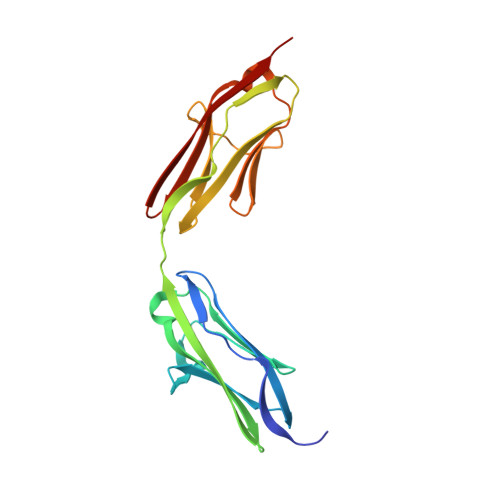The ZT Biopolymer: A Self-Assembling Protein Scaffold for Stem Cell Applications.
Nesterenko, Y., Hill, C.J., Fleming, J.R., Murray, P., Mayans, O.(2019) Int J Mol Sci 20
- PubMed: 31484291
- DOI: https://doi.org/10.3390/ijms20174299
- Primary Citation of Related Structures:
6SDB - PubMed Abstract:
The development of cell culture systems for the naturalistic propagation, self-renewal and differentiation of cells ex vivo is a high goal of molecular engineering. Despite significant success in recent years, the high cost of up-scaling cultures, the need for xeno-free culture conditions, and the degree of mimicry of the natural extracellular matrix attainable in vitro using designer substrates continue to pose obstacles to the translation of cell-based technologies. In this regard, the ZT biopolymer is a protein-based, stable, scalable, and economical cell substrate of high promise. ZT is based on the naturally occurring assembly of two human proteins: titin-Z1Z2 and telethonin. These protein building blocks are robust scaffolds that can be conveniently functionalized with full-length proteins and bioactive peptidic motifs by genetic manipulation, prior to self-assembly. The polymer is, thereby, fully encodable. Functionalized versions of the ZT polymer have been shown to successfully sustain the long-term culturing of human embryonic stem cells (hESCs), human induced pluripotent stem cells (hiPSCs), and murine mesenchymal stromal cells (mMSCs). Pluripotency of hESCs and hiPSCs was retained for the longest period assayed (4 months). Results point to the large potential of the ZT system for the creation of a modular, pluri-functional biomaterial for cell-based applications.
Organizational Affiliation:
Department of Biology, University of Konstanz, 78457 Konstanz, Germany.


















